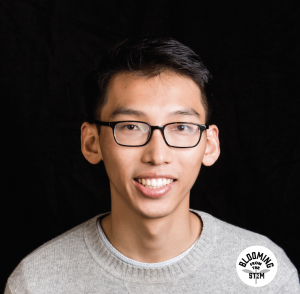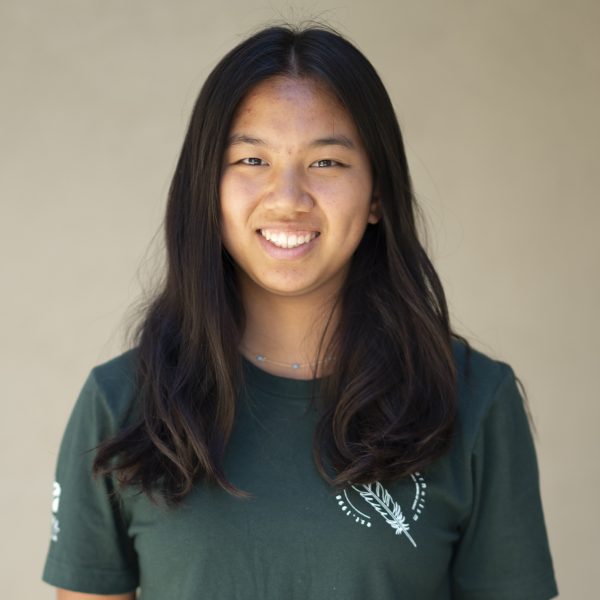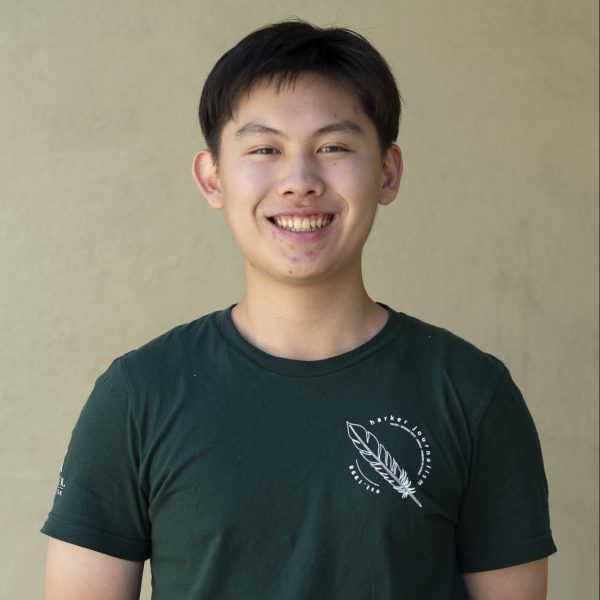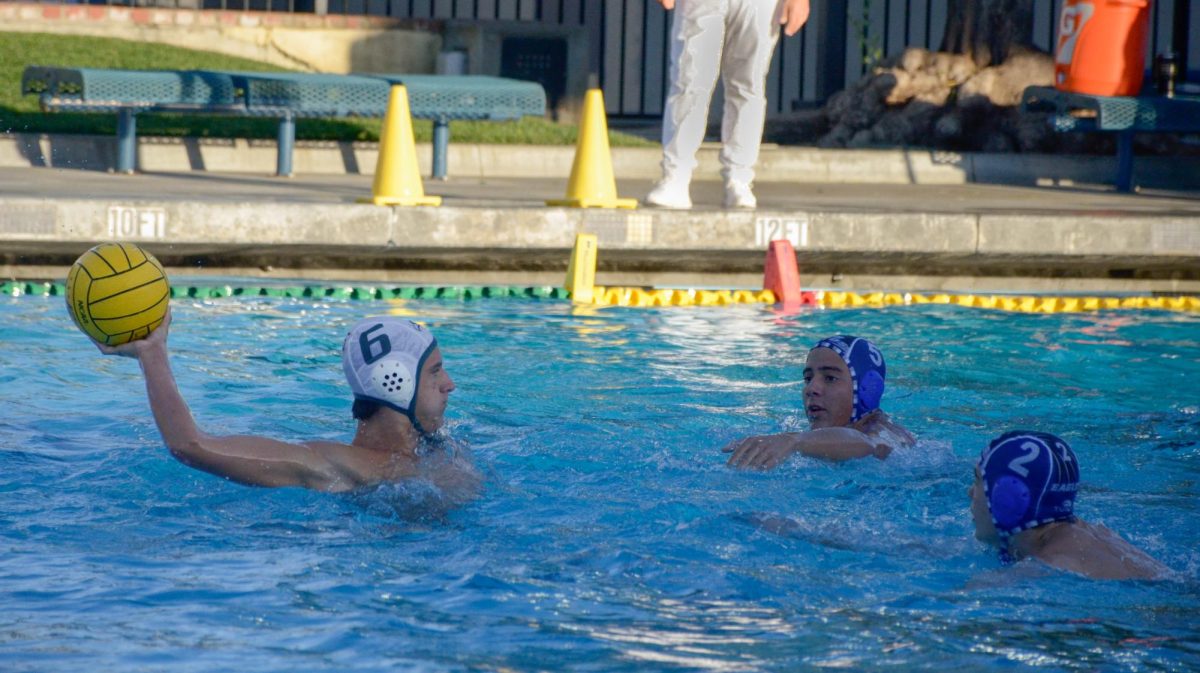Blooming from the STEM: Anand Natarajan (‘09) dives into quantum computing

Provided by Dr. Anand Natarajan
Assistant professor Anand Natarajan (’09) teaches at the Massachusetts Institute of Technology’s (MIT) Electrical Engineering and Computer Science (EECS) department. He first discovered his love for science as a child and explored his passion at the high school level with clubs and advanced classes.
March 28, 2022
Imagine that you and I are on the opposite sides of the galaxy, and you perform an operation on yourself. Now, imagine that we reunite on Earth, and it turns out that the same operation affected me, despite staying billions of light-years away. This suggests that we share two halves of an entangled quantum system, and this process, known as quantum entanglement, or “spooky action at a distance,” has fascinated Dr. Anand Natarajan (‘09) for years.
Dr. Natarajan’s passion for STEM blossomed before middle school. He would spend his free time reading popular science books, including Stephen Hawking’s A Brief History of Time, binging Feynman physics lectures and engaging in physics classes with Stanford’s Enrichment Program for Gifted Youth (EPGY). He credits these early opportunities for “making [him] feel excited about the material.”
“I was attracted [to] the fact that [physics is] all combined: elegant math with being empirically testable,” Dr. Natarajan said. “In physics, it can be very simple things that you can fully understand with math, and the math applies to the world. That combination seemed really nice to me.”
After joining Harker as a freshman in 2006, Dr. Natarajan continued to foster his interests in STEM, taking Advanced Placement (AP) Physics C and advanced computer science classes such as Computer Architecture and Neural Networks, as well as competing in the National Science Bowl competition.
Upper school computer science department chair and physics teacher Dr. Eric Nelson, who taught Dr. Natarajan in his sophomore and senior years, reflects on how Dr. Natarajan “always did everything beyond expectations,” such as when he extended his three-layer neural network to a versatile n-layered one.
“What stood out [was] the fact that he really liked digging into solving problems, such as he didn’t take my derivation for the drag relationship for those balls at face value,” Dr. Nelson said. “He was going to do it himself, and in the process, he found an error. That’s the nature of who he is … I always had to make sure that I kept him challenged. I had to raise the bar in terms of the information content because he was very good at what he did.”
Yet, Dr. Natarajan’s curiosity branched out beyond the sciences: He further dedicated himself to quiz bowl and linguistics, ultimately earning a silver medal for the U.S. at the 2009 International Linguistics Olympiad (IOL).
“[Dr. Natarajan] is passionate about what he does,” said upper school math teacher Dr. Victor Adler, who taught Dr. Natarajan in his sophomore year. “He really enjoyed math and science, figuring out puzzles — every aspect of academics — and [was] passionate about doing it and really wanted to learn and understand. He just likes to learn.”
What Dr. Natarajan appreciates the most about Harker was the opportunity to grow and immerse himself in a community of like-minded, driven and intellectually curious peers.
“The general community had more of an effect than the particular classes [I took],” Dr. Natarajan said. “The fact that there were a lot of other people who are interested in these things, that was inspiring, especially when a lot of people were clearly more knowledgeable than me. It encourages you to want to learn more.”
Dr. Natarajan’s primary passion remained in physics — he competed in the U.S. of America Physics Olympiad (USAPhO) throughout high school, his experience culminating in representing the U.S. at the 2009 International Physics Olympiad (IPhO), when he won a gold medal for the team. His participation in olympiads served as a stepping stone for his career.
“[Participating in physics olympiads] had two effects: one of them is exposure to what doing physics is like, and the other is confidence,” Dr. Natarajan said. “We all hear that it’s very hard to get a career in scientific research, especially in academia, … but it was a sign that I should consider it. That was almost a stronger effect than the actual contents that I’ve learned.”
After graduating from Harker in 2009, Dr. Natarajan majored in physics at Stanford, taking a variety of theoretical computer science and physics courses, areas in which he found the most joy. There, Dr. Natarajan discovered a way to pursue both his interests at once: quantum computing.
In 2013, Dr. Natarajan attended the California Institute of Technology (Caltech) to complete his postdoctoral research, during which he worked with Dr. Thomas Vidick, professor of the Computing and Mathematical Sciences department at Caltech, on an open problem, a known question in scientific field that has yet to be solved, in quantum computing.
At the time, Vidick was working with students and professors from other universities on a related problem, and when Dr. Natarajan jumped in to help, the groups discovered numerous related ideas. The groups joined forces and, over the next two years, worked to combine their ideas to solve the problem.
Yet, a couple of months after the group published their final results in 2020, they discovered a mistake from a prior paper which the recently completed proof built upon, but after “quite a bit of work,” Dr. Natarajan and his fellow researchers recovered their results. Dr. Natarajan reflects on the persistence that conducting research demands.
“Often in research, you don’t make much progress; most of the time, you’re stuck,” Dr. Natarajan said. “But when you’re stuck, you try new ideas, you read other people’s results to see if you can find techniques there. We learn about some creative insight that they had. Every time I learn something new, I count it as a success even if I haven’t solved my problem.”
Dr. Natarajan obtained his Ph.D. in physics at the Massachusetts Institute of Technology (MIT) in 2018 and, as a result of his successes in the field, was invited to join the MIT faculty. Now, as an assistant professor in MIT’s Electrical Engineering and Computer Science (EECS) department, he continues to explore the world of quantum computing. His daily work involves teaching introductory undergraduate as well as graduate classes and reviewing manuscripts for journals and conferences. Yet, his interactions with his students are not limited to lectures and homework discussions; Dr. Natarajan most treasures conducting research with his students.
“You have access to students which is great because you can work together with them on problems,” Dr. Natarajan said. “That was one attractive thing for me: Yes, you spend time teaching, but that’s something that you gain also because you’re on an ascending [path], and you get to work with students, and you can make more progress together than individually.”
Coming full circle, Dr. Natarajan has grown from a student to a researcher to a mentor, yet his journey is far from over: He hopes to continue supporting his students and researching open areas in quantum computing and envisions technological and scientific developments such as the computerizing of mathematical proofs.
Dr. Natarajan advises high school students to allow competition to motivate rather than discourage them from pursuing their passions and to maintain an open mind throughout high school.
“Find things you are passionate about,” Dr. Natarajan said. “Try to interact with many different people. Don’t specialize in one topic in high school since in college you will have to focus on specific areas.”


















![“[Building nerf blasters] became this outlet of creativity for me that hasn't been matched by anything else. The process [of] making a build complete to your desire is such a painstakingly difficult process, but I've had to learn from [the skills needed from] soldering to proper painting. There's so many different options for everything, if you think about it, it exists. The best part is [that] if it doesn't exist, you can build it yourself," Ishaan Parate said.](https://harkeraquila.com/wp-content/uploads/2022/08/DSC_8149-900x604.jpg)




![“When I came into high school, I was ready to be a follower. But DECA was a game changer for me. It helped me overcome my fear of public speaking, and it's played such a major role in who I've become today. To be able to successfully lead a chapter of 150 students, an officer team and be one of the upperclassmen I once really admired is something I'm [really] proud of,” Anvitha Tummala ('21) said.](https://harkeraquila.com/wp-content/uploads/2021/07/Screen-Shot-2021-07-25-at-9.50.05-AM-900x594.png)







![“I think getting up in the morning and having a sense of purpose [is exciting]. I think without a certain amount of drive, life is kind of obsolete and mundane, and I think having that every single day is what makes each day unique and kind of makes life exciting,” Neymika Jain (12) said.](https://harkeraquila.com/wp-content/uploads/2017/06/Screen-Shot-2017-06-03-at-4.54.16-PM.png)








![“My slogan is ‘slow feet, don’t eat, and I’m hungry.’ You need to run fast to get where you are–you aren't going to get those championships if you aren't fast,” Angel Cervantes (12) said. “I want to do well in school on my tests and in track and win championships for my team. I live by that, [and] I can do that anywhere: in the classroom or on the field.”](https://harkeraquila.com/wp-content/uploads/2018/06/DSC5146-900x601.jpg)
![“[Volleyball has] taught me how to fall correctly, and another thing it taught is that you don’t have to be the best at something to be good at it. If you just hit the ball in a smart way, then it still scores points and you’re good at it. You could be a background player and still make a much bigger impact on the team than you would think,” Anya Gert (’20) said.](https://harkeraquila.com/wp-content/uploads/2020/06/AnnaGert_JinTuan_HoHPhotoEdited-600x900.jpeg)

![“I'm not nearly there yet, but [my confidence has] definitely been getting better since I was pretty shy and timid coming into Harker my freshman year. I know that there's a lot of people that are really confident in what they do, and I really admire them. Everyone's so driven and that has really pushed me to kind of try to find my own place in high school and be more confident,” Alyssa Huang (’20) said.](https://harkeraquila.com/wp-content/uploads/2020/06/AlyssaHuang_EmilyChen_HoHPhoto-900x749.jpeg)





![“[Computer science] is analytical in its foundation. But it’s artistic in its execution. There is so much nuance and craft that goes into solving a problem and that goes into designing a model and writing code and building a system at scale," Rengarajan said.](https://harkeraquila.com/wp-content/uploads/2021/09/Screen-Shot-2021-09-02-at-6.49.15-PM-300x546.png)








